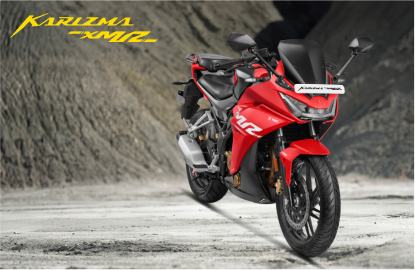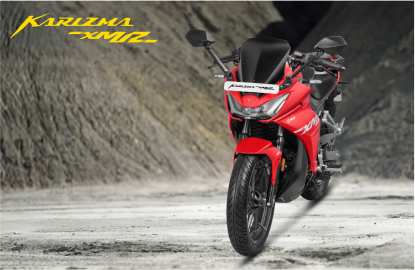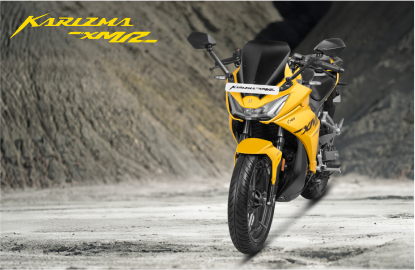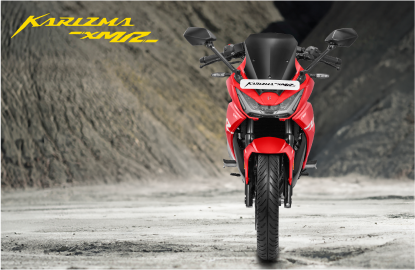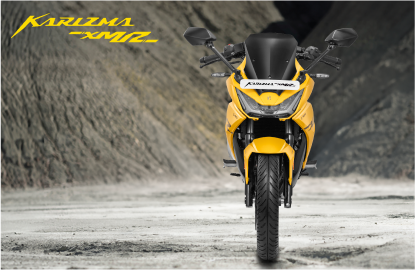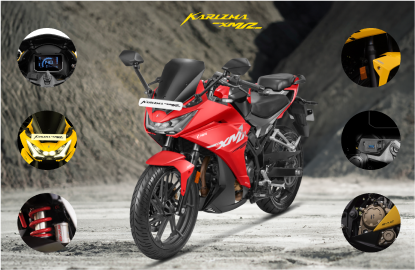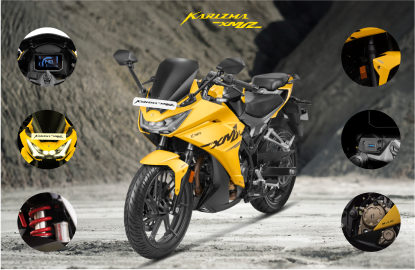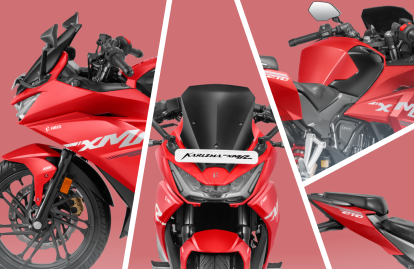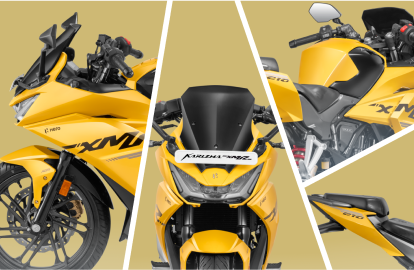210 cc engine
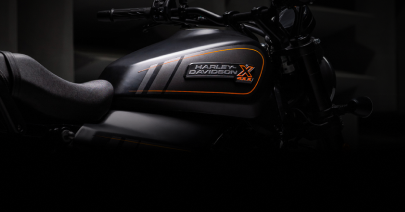
210 cc
4 Stroke 4 Valve Single Cylinder Liquid Cooled DOHC
280mm | 270mm
Rear and Front suspension travel
250 cc
4 Stroke, 4 Valve, Single Cylinder Liquid Cooled, DOHC
25 nm
@7250 RPM
210 cc
4 Stroke 4 Valve Single Cylinder Liquid Cooled DOHC
20.7 nm
@7250 RPM
97.2 cc
Air cooled, 4-stroke, Single cylinder, OHC
8.05 nm
@6000 RPM
124.7 cc
Air Cooled, 4-Stroke, OHC, Single Cylinder
10.6 nm
@6000 RPM
124.7 cc
Air Cooled 4 stroke
10.6 nm
@6000 RPM
163.2 cc
Air oil cooled, 4-stroke, Single cylinder, OHC
14.6 nm
@6500 RPM
199.6 cc
Oil Cooled, 4 stroke 4 Valve single cylinder OHC
17.35 nm
@6500 RPM
210 cc
Liquid cooled, 4-stroke, Single cylinder, OHC
20.4 nm
@4000 RPM
440 cc
Air cooled, 4-stroke, Single cylinder, OHC
38 nm
@4000 RPM

210 cc engine

250 cc engine

210 cc engine

97.2 cc engine

97.2 cc engine
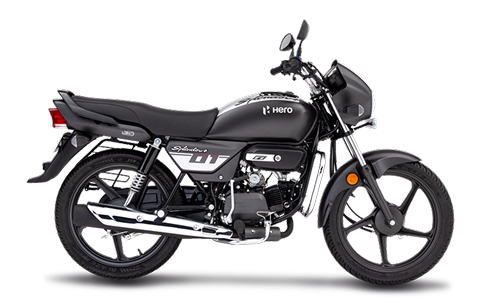
97.2 cc engine

97.2 cc engine
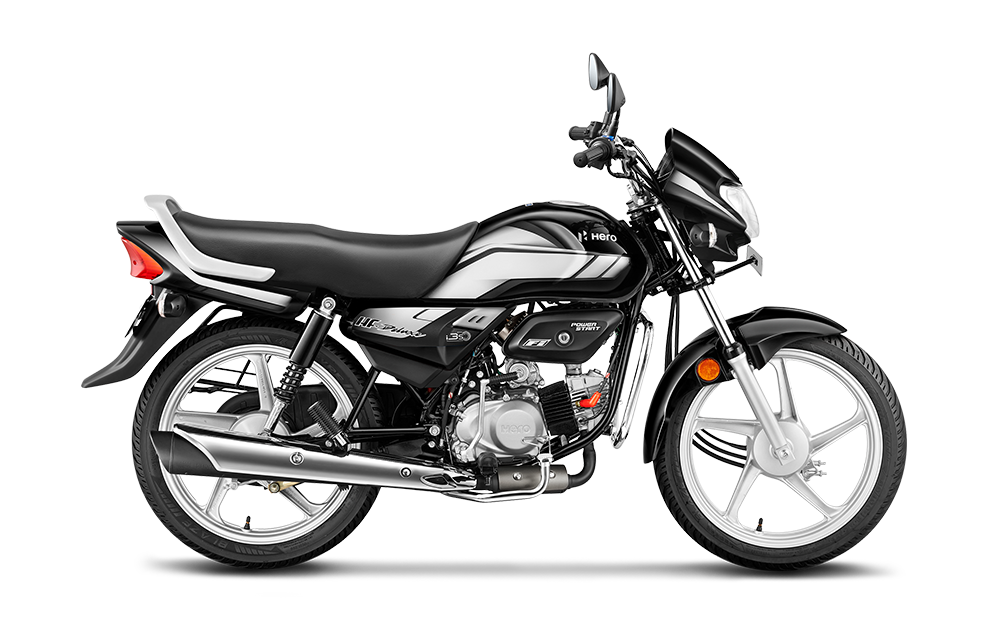
97.2 cc engine

97.2 cc engine

125 cc engine

125 cc engine

125 cc engine

124.7 cc engine

124.7 cc engine
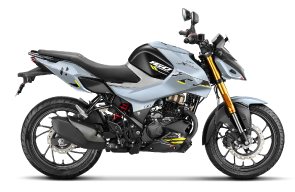
163.2 cc engine

163.2 cc engine

199.6 cc engine

210 cc engine

440 cc engine

440 cc engine
210 cc
4 Stroke 4 Valve Single Cylinder Liquid Cooled DOHC
280mm | 270mm
Rear and Front suspension travel
250 cc
4 Stroke, 4 Valve, Single Cylinder Liquid Cooled, DOHC
25 nm
@7250 RPM
210 cc
4 Stroke 4 Valve Single Cylinder Liquid Cooled DOHC
20.7 nm
@7250 RPM
97.2 cc
Air cooled, 4 stroke
8.05 nm
@6000 RPM
97.2 cc
Air cooled, 4-stroke, Single cylinder, OHC
8.05 nm
@6000 RPM
97.2 cc
Air cooled, 4-stroke, Single cylinder, OHC
8.05 nm
@6000 RPM
97.2 cc
Air cooled, 4-stroke, Single cylinder, OHC
8.05 nm
@6000 RPM
97.2 cc
Air cooled, 4-stroke, Single cylinder, OHC
8.05 nm
@6000 RPM
97.2 cc
Air cooled, 4-stroke, Single cylinder, OHC
8.05 nm
@6000 RPM
125 cc
Air cooled, 4-Stroke
10.5 nm
@6500 RPM
125 cc
5.7 sec, Acceleartion 0-60kmph
10.5 nm
@6500 RPM
125 cc
Air cooled, 4-stroke, Single cylinder, OHC
10.6 nm
@6000 RPM
124.7 cc
Air Cooled, 4-Stroke, OHC, Single Cylinder
10.6 nm
@6000 RPM
124.7 cc
Air Cooled 4 stroke
10.6 nm
@6000 RPM
163.2 cc
Air oil cooled, 4-stroke, Single cylinder, OHC
14.6 nm
@6500 RPM
163.2 cc
Air Cooled 4 stroke
14 nm
@6500 RPM
199.6 cc
Oil Cooled, 4 stroke 4 Valve single cylinder OHC
17.35 nm
@6500 RPM
210 cc
Liquid cooled, 4-stroke, Single cylinder, OHC
20.4 nm
@4000 RPM
440 cc
Oil cooled, 4-stroke, Single cylinder, OHC
36 nm
@4000 RPM
440 cc
Air cooled, 4-stroke, Single cylinder, OHC
38 nm
@4000 RPM

110 cc engine
125 cc engine

156 cc engine

124.6 cc engine

124.6 cc engine
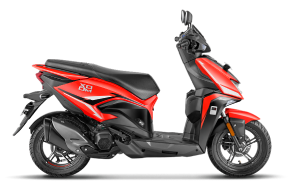
110.9 cc engine
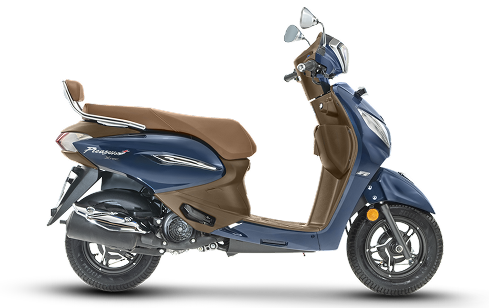
110.9 cc engine
110 cc
Air Cooled, 4 stroke engine
8.87 nm
@5750 RPM
125 cc
Air cooled, 4 stroke, SI engine
10.4 nm
@5500 RPM
156 cc
Liquid cooled, 4 Valve single cylinder SOHC
14 nm
@6250 RPM
124.6 cc
Air Cooled, 4 stroke, SI
10.4 nm
@6000 RPM
124.6 cc
Air Cooled, 4-Stroke, SI Engine
10.36 nm
@5500 RPM
110.9 cc
Air cooled, 4-stroke, SI engine
8.70 nm
@5750 RPM
110.9 cc
Air cooled, 4-stroke Single Cylinder OHC
8.70 nm
@5500 RPM


What is the Dual Channel ABS Braking System on the Karizma XMR?
WHAT IS THE DUAL CHANNEL ABS BRAKING SYSTEM ON THE KARIZMA XMR?
Imagine hurtling down a winding mountain road on your beloved Hero Karizma XMR 2023, the wind whipping through your hair as you savour the thrill of the ride. Suddenly, a deer leaps onto the asphalt, forcing you to slam on the brakes. In that heart-stopping moment, the performance of your braking system becomes the difference between a controlled stop and a potentially disastrous outcome.
The Importance of a Good Braking System
For every motorcycle rider, a reliable and effective braking system is paramount. It's the guardian angel that keeps you in control, allowing you to navigate traffic, avoid obstacles, and come to a safe stop, regardless of the conditions. In simple terms, good brakes mean confidence and peace of mind on the road.

Understanding ABS
Enter the Anti-lock Braking System (ABS), a technological marvel that revolutionised motorcycle safety. In essence, ABS prevents your wheels from locking up during hard braking, a situation that can lead to loss of control and skidding.
Imagine this: under heavy braking, without ABS, your wheels can lock up, causing them to lose traction with the road surface. This makes steering virtually impossible, potentially throwing you off the bike. Found routinely on the latest bikes, ABS intervenes by rapidly pulsating the brakes, preventing the wheels from locking and maintaining your ability to manoeuvre and steer even during emergency braking.

Understanding ABS
Enter the Anti-lock Braking System (ABS), a technological marvel that revolutionised motorcycle safety. In essence, ABS prevents your wheels from locking up during hard braking, a situation that can lead to loss of control and skidding.
Imagine this: under heavy braking, without ABS, your wheels can lock up, causing them to lose traction with the road surface. This makes steering virtually impossible, potentially throwing you off the bike. Found routinely on the latest bikes, ABS intervenes by rapidly pulsating the brakes, preventing the wheels from locking and maintaining your ability to manoeuvre and steer even during emergency braking.
Dual Channel ABS: Taking it a Step Further
While ABS itself is a game-changer, the Hero Karizma XMR boasts an even more advanced system: Dual Channel ABS. The Karizma XMR 2023 price seems more like an investment when you consider the safety the bike offers. This system operates independently on both the front and rear wheels, making it even more effective in ensuring your safety and control.
Here's how it works:
- Independent Control: Unlike single-channel ABS, which only controls the rear wheel, dual-channel ABS applies braking pressure to both wheels individually, based on the amount of force applied to each brake lever. This provides optimal braking balance and stability, preventing the rear wheel from lifting or the front wheel from over-braking.
- Enhanced Maneuverability: With dual-channel ABS, you can maintain steering control during hard braking, allowing you to swerve around obstacles or adjust your line to avoid a collision. This is crucial for navigating tight corners or unexpected situations on the road.
Dual Channel ABS in the Karizma XMR
Hero MotoCorp has equipped the Karizma XMR with a sophisticated dual-channel ABS system. This system works in tandem with the bike's 300mm petal disc brake at the front and 230mm petal disc at the rear, ensuring powerful and controlled stopping under all conditions.
The Advantages of Dual Channel ABS
The benefits of having dual-channel ABS, which you get on the justified Karizma XMR 210 price, are undeniable:
- Enhanced Safety: Shorter stopping distances, improved control during braking, and reduced risk of skidding significantly contribute to rider safety.
- Confidence Boost: Knowing you have optimal braking capability at your fingertips grants you the confidence to tackle any road situation with poise.
- Versatility: Dual-channel ABS performs effectively on different surfaces, from dry tarmac to wet roads, gravel, and even loose dirt.
It's important to remember that it's a tool, not a magic bullet. Responsible riding practices, obeying traffic rules, and maintaining your brakes are still crucial for your safety.
Final Thoughts
The Karizma XMR's dual-channel ABS puts it at the forefront of braking technology in its class. This advanced system offers unmatched safety, control, and confidence, making it a compelling choice for riders who prioritise both performance and peace of mind.
So, the next time you're out exploring the open road on your latest bike, the Hero Karizma XMR 2023, remember that the dual-channel ABS is silently working behind the scenes, keeping you safe and in control. Ride on!
1. What is the main advantage of dual-channel ABS on the Karizma XMR?
Dual channel ABS offers enhanced safety through better stopping power, control, and reduced risk of accidents.
2. What is the Hero Karizma XMR 210 price in Kolkata?
The ex-showroom price of the Karizma XMR is ₹ 1,79,900. To know the exact price in Kolkata, please visit your nearest Hero dealership.
3. Why is a good braking system important on a motorcycle?
It allows you to safely navigate traffic, avoid obstacles, and come to a stop regardless of the road conditions. Having a dual-ABS braking system also positively impacts your Hero Karizma XMR 210 mileage.
4. What kind of brakes does the Karizma XMR have?
It has dual-channel ABS with a 300mm disc brake at the front and a 230mm disc brake at the rear.
5. On what surfaces does Dual Channel ABS work well?
It performs well on dry tarmac, wet roads, gravel, and even loose dirt.
1. What is the main advantage of dual-channel ABS on the Karizma XMR?
Dual channel ABS offers enhanced safety through better stopping power, control, and reduced risk of accidents.
2. What is the Hero Karizma XMR 210 price in Kolkata?
The ex-showroom price of the Karizma XMR is ₹ 1,79,900. To know the exact price in Kolkata, please visit your nearest Hero dealership.
3. Why is a good braking system important on a motorcycle?
It allows you to safely navigate traffic, avoid obstacles, and come to a stop regardless of the road conditions. Having a dual-ABS braking system also positively impacts your Hero Karizma XMR 210 mileage.
4. What kind of brakes does the Karizma XMR have?
It has dual-channel ABS with a 300mm disc brake at the front and a 230mm disc brake at the rear.
5. On what surfaces does Dual Channel ABS work well?
It performs well on dry tarmac, wet roads, gravel, and even loose dirt.
Explore More

KARIZMA Insights
Please Select Your Country
-
 Angola
Angola
-
 Argentina
Argentina
-
 Bangladesh
Bangladesh
-
 Bolivia
Bolivia
-
 Colombia
Colombia
-
 Costa Rica
Costa Rica
-
 Dominican Republic
Dominican Republic
-
 DRC
DRC
-
 Ecuador
Ecuador
-
 El Salvador
El Salvador
-
 Ethiopia
Ethiopia
-
 France
France
-
 GCC
GCC
-
 Great Britain
Great Britain
-
 Guatemala
Guatemala
-
 Guinea
Guinea
-
 Guyana
Guyana
-
 Haiti
Haiti
-
 Honduras
Honduras
-
 Italy
Italy
-
 Kenya
Kenya
-
 Madagascar
Madagascar
-
 Mexico
Mexico
-
 Myanmar
Myanmar
-
 Nepal
Nepal
-
 Nicaragua
Nicaragua
-
 Nigeria
Nigeria
-
 Panama
Panama
-
 Peru
Peru
-
 Philippines
Philippines
-
 South Africa
South Africa
-
 Spain
Spain
-
 Sri Lanka
Sri Lanka
-
 Tanzania
Tanzania
-
 Trinidad
Trinidad
-
 Turkey
Turkey
-
 Uganda
Uganda
-
 Zambia
Zambia
I agree to the terms & condition and privacy policy

Verification Successful
I agree to the terms & condition and privacy policy


Welcome to Hero Corporate


Copyright Hero MotoCorp Ltd. 2025 . All Rights Reserved.


